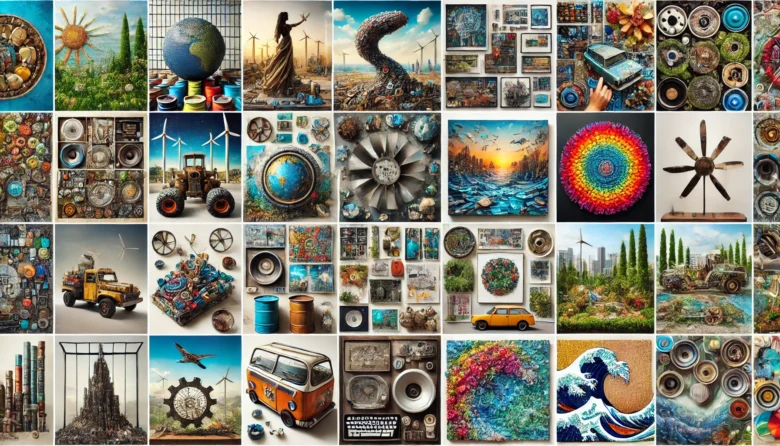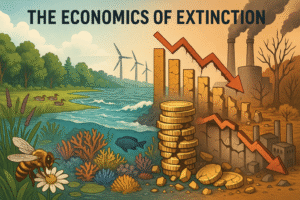In a world increasingly burdened by waste, the concept of eco-art is gaining momentum, transforming trash into treasure and making a significant environmental impact. Eco-art, or environmental art, is a creative practice where artists use waste materials to create stunning artworks. This not only helps in reducing waste but also raises awareness about sustainability. In this blog, we will explore how eco-art is turning waste into wonder and making a difference, especially in the Indian context.
The Rise of Eco-Art
Eco-art is more than just a trend; it’s a movement towards sustainability. Artists across the globe, including India, are embracing this form of art to address the pressing issue of waste management. By transforming materials destined for landfills, eco-artists produce visually stunning works that also convey powerful environmental messages.

Indian Artists Leading the Way
India, with its rich cultural heritage and diverse artistic traditions, is home to many eco-artists who are making significant contributions. Artists like Manisha Jha, who uses discarded materials to create intricate sculptures, and Ankon Mitra, known for his origami-inspired installations made from recycled paper, are just a few examples of how waste can be turned into wonder.
Community Involvement
Eco-art is not just for professional artists; it is a community-driven effort. Schools, colleges, and local communities are increasingly participating in eco-art projects. Workshops and events are organized to educate people about the benefits of recycling and upcycling. These initiatives are crucial in spreading the message of sustainability and inspiring more people to contribute to the cause.
The Environmental Impact
The environmental impact of eco-art is significant. By repurposing waste materials, eco-art reduces the amount of waste that ends up in landfills. It also cuts down the need for raw materials, thereby conserving natural resources. Additionally, eco-art installations frequently draw attention to environmental concerns, encouraging viewers to reflect on their personal consumption and waste practices.
Corporate Support
Many companies recognize the value of eco-art and support such initiatives as part of their Corporate Social Responsibility (CSR) programs. For example, Tata Steel (one of India’s leading steel producers) has collaborated with artists to create sculptures from industrial waste. Similarly, ITC Limited (a major Indian conglomerate) supports art projects that use recycled materials as part of its sustainability efforts.
How to Get Involved
Getting involved in eco-art is easier than you might think. Start by looking at the waste materials in your home or office and thinking creatively about how they can be repurposed. You can find a wealth of online resources and tutorials that provide guidance for different eco-art projects. Additionally, participating in local workshops and events can provide hands-on experience and connect you with like-minded individuals.
Conclusion: Turning Waste into Wonder
Eco-art is a powerful tool in the fight against waste and environmental degradation. By turning waste into wonder, eco-artists not only create beautiful and meaningful artworks but also promote sustainability and environmental consciousness. In India, the eco-art movement is growing, with more artists and communities embracing this creative approach to waste management.
As we continue to face environmental challenges, eco-art offers a hopeful and inspiring solution. By supporting and participating in eco-art initiatives, we can all play a part in making our world a cleaner and more beautiful place.
Author’s Note
Thank you for reading this blog on eco-art. I hope it inspires you to look at waste materials differently and explore the creative possibilities they offer. Together, we can make a difference and turn waste into wonder.
G.C., Ecosociosphere contributor.




